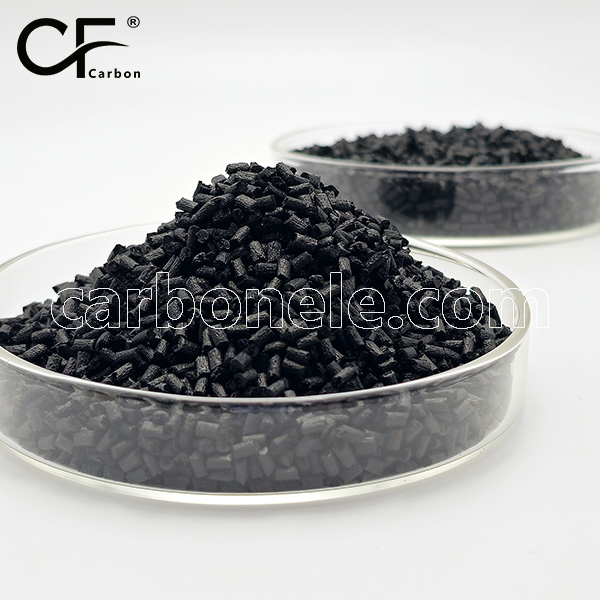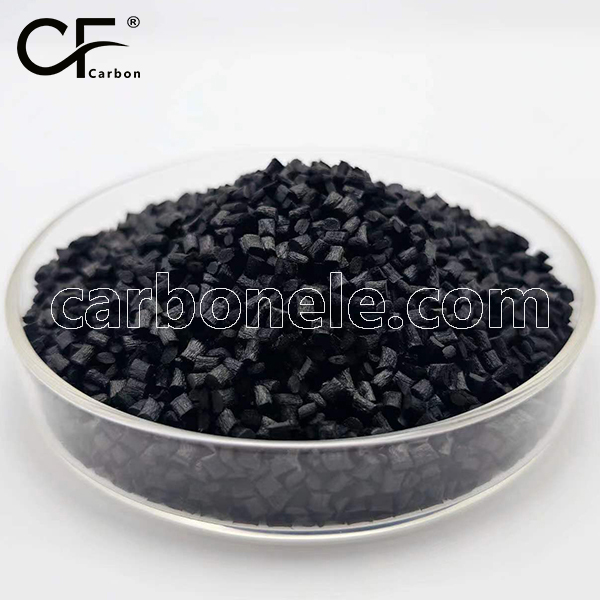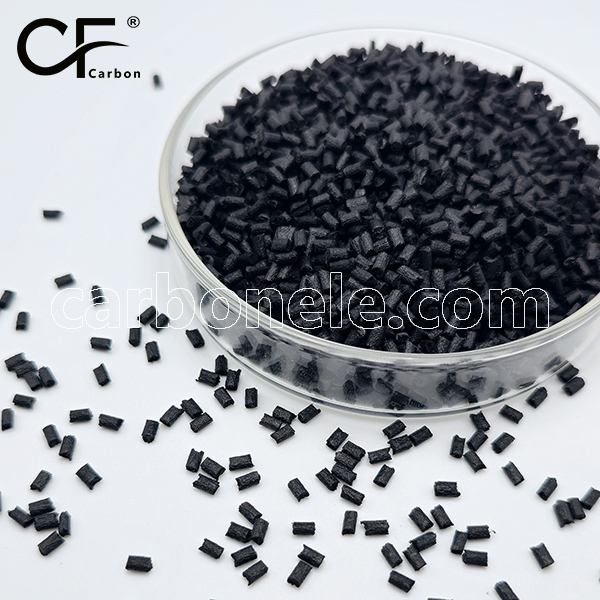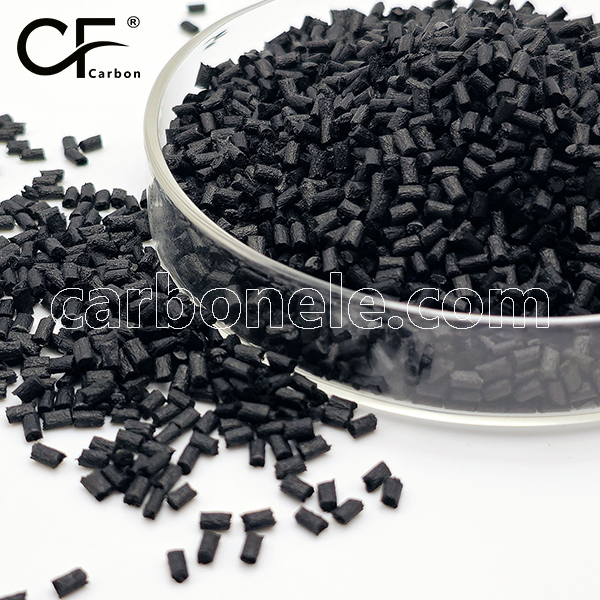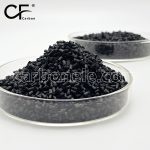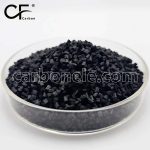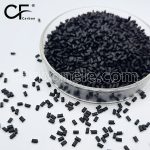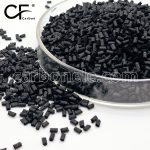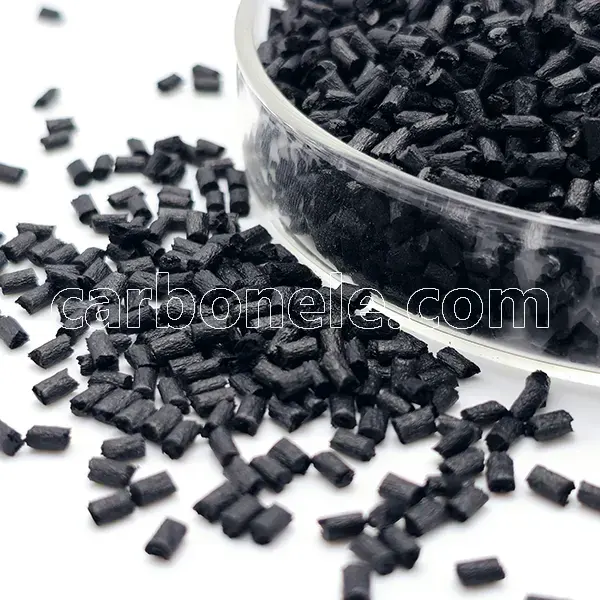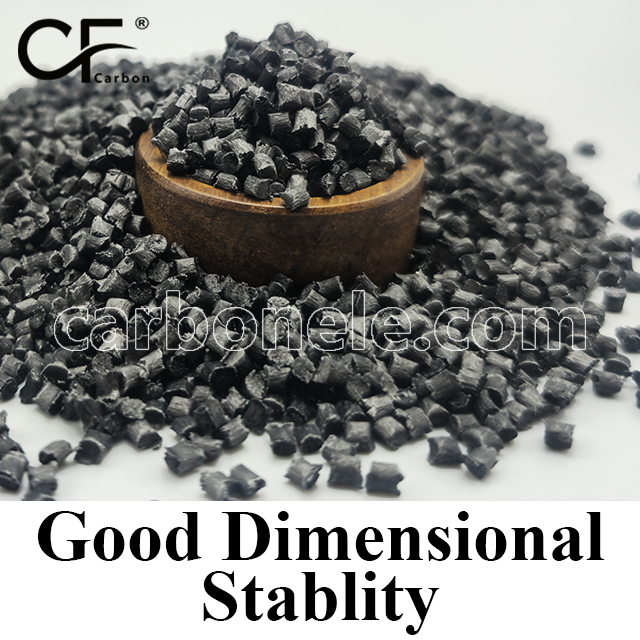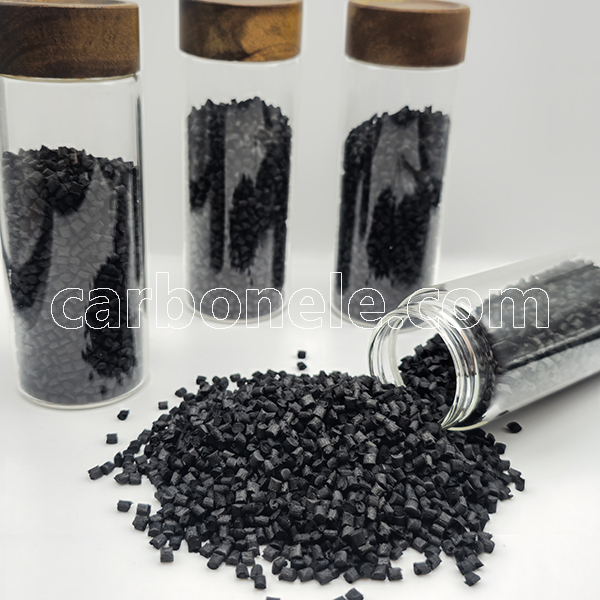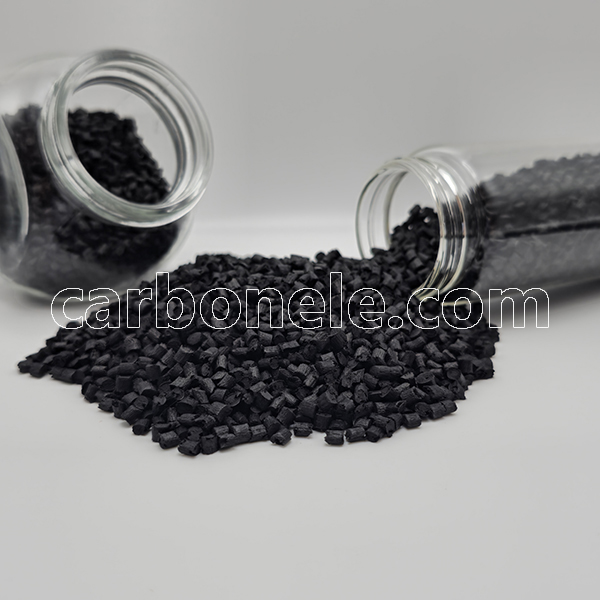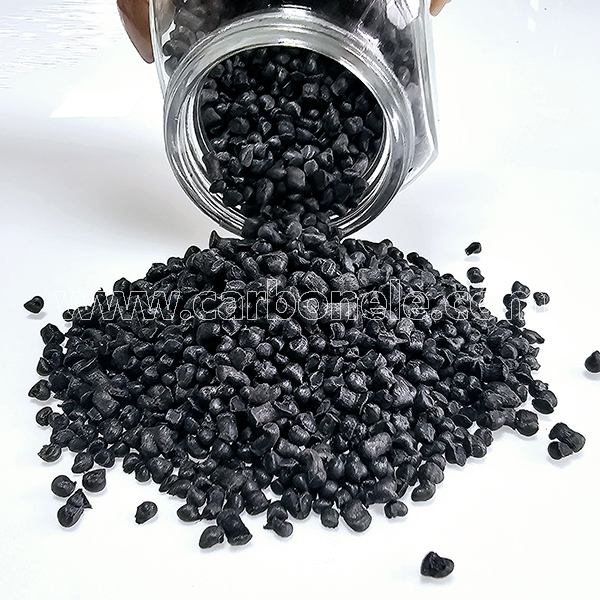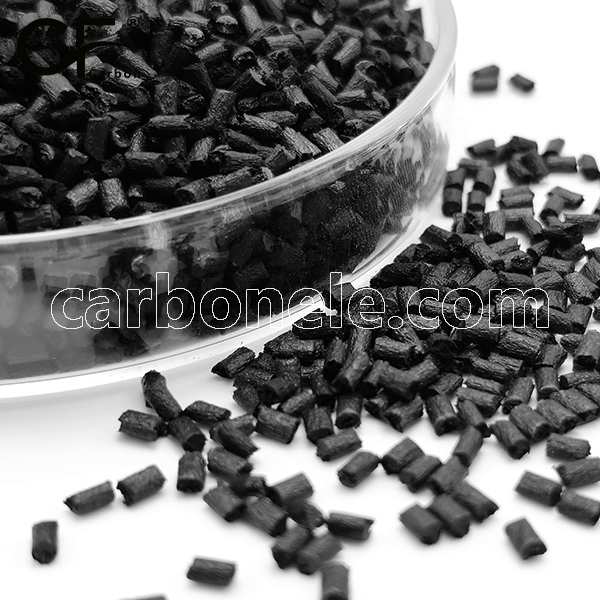
High Strength yet Lightweight PA66 CF40 Compounds for Drone Propellers
PA66 CF40 compounds offer the best balance of strength, weight, and cost while enabling complex geometries for mass production and through the synergy of material science and engineering design, has become the gold standard for high-performance drone propellers and UAV blades.
- Model: PA66-CF-BCA4
- Fillers: Chopped carbon fiber
- Free samples: ≤25kg
- Port: Xiamen
- MOQ: 100kg
- OEM: Acceptable
PA66 CF40 compounds (Nylon 66 reinforced with 40% carbon fiber) are an excellent material choice for drone propellers due to its unique combination of properties.
1. Optimal Balance of High Strength and Lightweight Properties
- Carbon Fiber Reinforcement: The 40% carbon fiber filler significantly enhances PA66’s tensile strength (exceeding 300 MPa) and flexural modulus (typically over 20 GPa), approaching the strength of aluminum but with a density of only 1.4–1.5 g/cm³ (one-third that of aluminum).
- Weight Reduction Benefits: Lightweight propellers directly improve drone flight time (a 5–8% increase in endurance per 10% weight reduction) and agility while reducing motor load.
2. Superior Fatigue Resistance and Durability of PA66 CF40 Compounds
- Cyclic Load Performance: Carbon fiber greatly improves PA66’s fatigue resistance, making it suitable for prolonged high-speed rotation (typically 5,000–10,000 RPM) under alternating stresses.
- Impact Resistance: PA66’s inherent toughness, combined with CF40 reinforcement, ensures structural integrity even under sudden collisions or low-temperature conditions, reducing blade fracture risks.
3. High Stiffness (Low Deformation) and Dynamic Stability
- High Modulus Properties: CF40’s flexural modulus (20–30 GPa) ensures minimal blade deformation during high-speed operation (e.g., <1 mm tip deflection), preventing aerodynamic efficiency loss.
- Vibration Damping: The material’s high damping properties reduce vibrations, lowering noise (3–5 dB reduction) and extending motor lifespan.
4. Environmental and Chemical Resistance
- Temperature Adaptability: PA66 CF40 compounds operate stably between -40°C to 120°C, covering typical drone environments (e.g., hot takeoffs, high-altitude cold).
- Chemical Resistance: Resistant to oils and solvents, making it suitable for agricultural drones exposed to pesticides or industrial environments.
5. Precision Molding and Aerodynamic Optimization
- Injection Molding Advantage: PA66 CF40 compounds allow complex airfoil designs (e.g., biomimetic swept shapes) and thin-walled structures (blade thickness <1 mm) with smoother surfaces than machined metal.
- Aerodynamic Efficiency: High rigidity ensures precise airfoil retention, reducing turbulence and improving lift efficiency (typical efficiency: 80–85%).
6. Cost-Effectiveness and Mass Production Feasibility
- Cost-Performance Ratio: Although carbon fiber increases material cost (~$15–20/kg), CF40 outperforms all-metal (high machining costs) or pure plastic (short lifespan) alternatives, making it ideal for mid-to-high-end drones.
- Rapid Production: Short injection molding cycles (30–60 seconds per part) enable large-scale manufacturing.
Comparison to Other Materials
Real-World Applications of PA66 CF40 Compounds: DJI Industrial Drones: Some models use similar composite propellers to achieve 30+ minutes of flight time. Potential Improvements: Nano-Coatings - Hydrophobic coatings can prevent icing (e.g., for polar drones). Smart Integration - Embedded fiber-optic sensors for real-time blade health monitoring (strain, cracks).
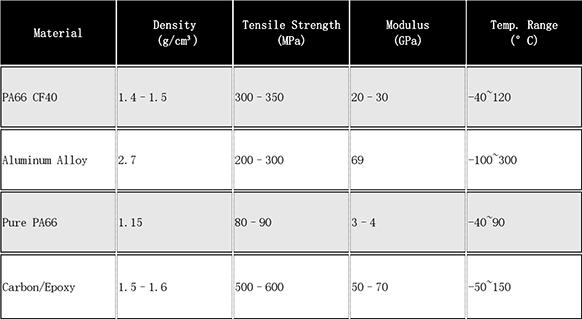
Surface Resistivity Comparison
Conductors < 10⁵ Ω/sq. Antistatic Materials 10⁵ ~ 10¹² Ω/sq. Insulators > 10¹² Ω/sq. Static-Dissipative 10⁶ ~ 10¹¹ Ω/sq. *Key Influencing Factors Humidity: Increased moisture can reduce resistivity (e.g., in polymers). Temperature: Affects carrier mobility (↑ heat may lower semiconductor resistivity). Surface Contamination: Dust/oils alter readings significantly. Additives: Carbon black, metallic fillers can lower resistivity. *Applications Electronics: Antistatic materials (10⁶–10⁹ Ω/sq) prevent electrostatic discharge (ESD). Aerospace: Composites must control resistivity to avoid charge buildup. Medical Devices: Insulating materials (>10¹² Ω/sq) ensure patient safety. *Examples Polypropylene (PP): ~10¹⁶ Ω/sq (excellent insulator). Carbon Fiber Composites: 10³–10⁶ Ω/sq (static dissipation). ESD Flooring: 10⁶–10⁹ Ω/sq.
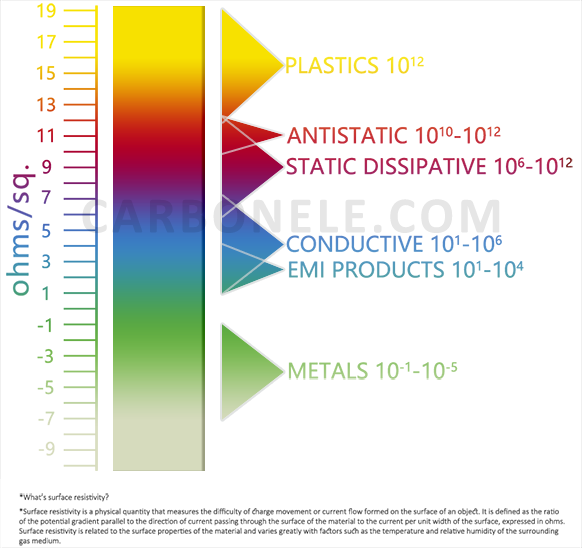
Get to Know Carbon Fibers
The table presents key performance data of carbon fiber grades. T300, with a tensile strength of 3530 MPa and a tensile modulus of 230 GPa, has a relatively low tensile elongation at break of 1.5% and a body density of 1.76 g/cm³. As the grade increases, for example, T700S shows an enhanced tensile strength of 4900 MPa compared to T300, while maintaining the same tensile modulus but with a higher elongation at break of 2.1%. T800S and T1000G both have a tensile modulus of 294 GPa, and their tensile strengths are 5880 MPa and 6370 MPa respectively. T1100G stands out with the highest tensile strength of 7000 MPa and a tensile modulus of 324 GPa. Generally, with the increase in product grade, the tensile strength and modulus tend to rise, while the density remains relatively stable around 1.8 g/cm³.
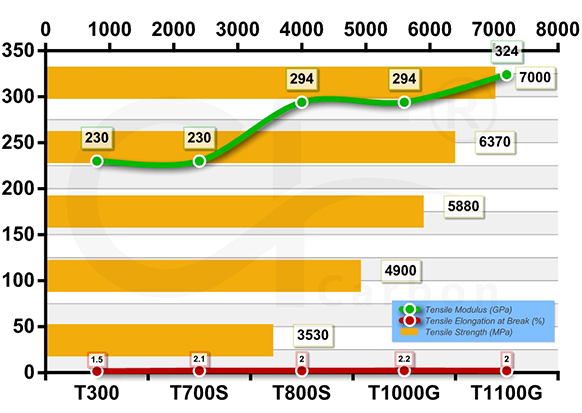
How to Buy?
If you want to obtain information such as product specifications, performance, and price, choose a suitable product according to your own needs. Meanwhile, you can ask the manufacturer to provide samples for testing to ensure that the material meets your usage requirements. If you are interested in purchasing this composite material, please contact the manufacturer Carbon (Xiamen) New Material directly.
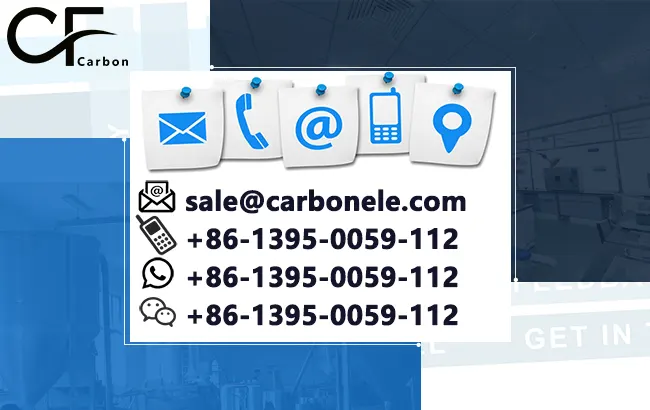
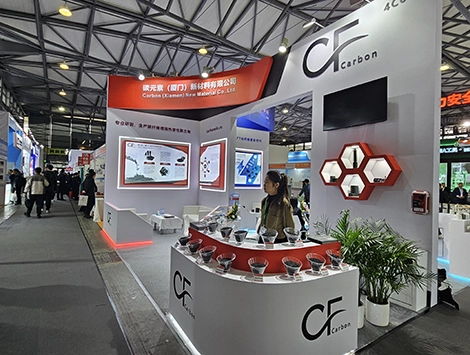

Frequently Asked Questions
Carbon (Xiamen) New Material Co., Ltd. aims to provide buyers with "one-stop" worry-free high-quality services. Here you can find all information about carbon fiber engineering plastics. If you still have questions, please send us an email for consultation!
-
How can I contact the manufacturer of a product that interests me?
When you find a product you are interested in, you can contact the manufacturer directly by sending an email and we will get back to you as soon as possible.
-
How do I find the products that interest me?
All you need to do is enter the keyword, product name in the search window and press the Enter key on your keyboard. Your search results page will then be displayed. You can also search within the product category pages on the home page. Each category is divided into subcategories, allowing you to refine your search and find products that interest you.
-
Where will I find a buying guide?
Please contact our after-sales service directly and we will provide you with a comprehensive operating guide.
-
What are CF Reinforced Thermoplastic Composites?
CF Reinforced Thermoplastic Composites are materials where carbon fibers are incorporated into a thermoplastic matrix. They combine the strength and stiffness of carbon fibers with the processability and recyclability of thermoplastics. For instance, they are used in automotive parts like bumper beams.
-
What are the benefits of CF Reinforced Thermoplastic Composites over traditional composites?
The key benefits include faster production cycles, easier recyclability, and better impact resistance. They also offer design flexibility. An example is in the manufacturing of consumer electronics casings where complex shapes can be achieved more easily.
-
How are CF Reinforced Thermoplastic Composites processed?
Common processing methods include injection molding, extrusion, and compression molding. Injection molding is widely used for mass production. For example, in the production of small components for the medical industry.
-
What industries use CF Reinforced Thermoplastic Composites?
They are utilized in aerospace, automotive, medical, and sports equipment industries. In aerospace, they can be found in interior components. In the medical field, they might be used in prosthetics.
-
How does the carbon fiber content affect the properties of the composites?
Higher carbon fiber content generally leads to increased strength and stiffness but may reduce ductility. A moderate content is often balanced for specific applications. For example, a higher content might be preferred in structural parts of a race car.
-
What are the challenges in using CF Reinforced Thermoplastic Composites?
Challenges include higher material costs, complex processing equipment requirements, and ensuring uniform fiber dispersion. Issues with adhesion between the fibers and the matrix can also arise. An example is in achieving consistent quality in large-scale production.








